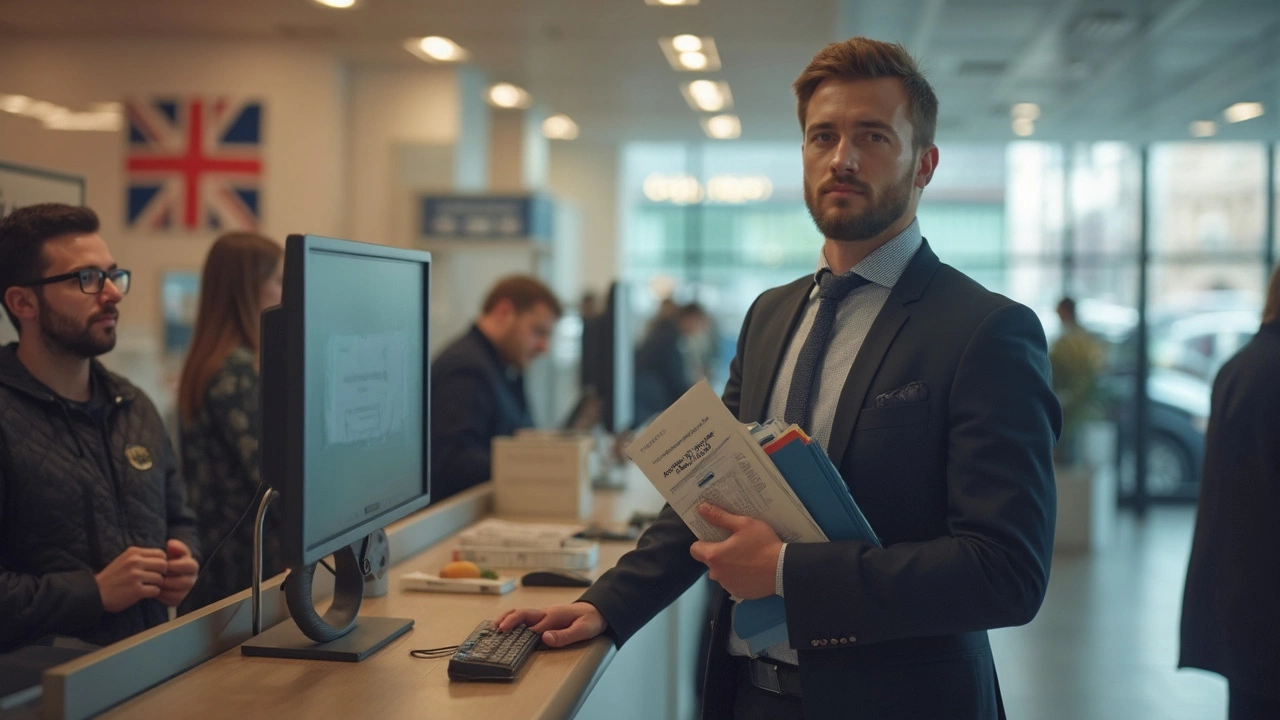License Processing Made Simple: Get Your HGV Licence Quickly
Getting an HGV licence feels like a maze, but it doesn’t have to be. In this guide we break down every step, list the paperwork you need, and share shortcuts that keep the process moving. By the end you’ll know exactly what to do, when to do it, and how to avoid the usual hold‑ups.
Key Steps in the HGV Licence Process
1. Check eligibility – You must be at least 18 years old, have a full UK car licence, and meet the required medical standards. A simple online health check on the DVSA site tells you if you’re fit to start.
2. Book your medical exam – The Doctor for Drivers (DfD) will assess vision, hearing, and overall health. Bring your current car licence, passport‑style photo, and any medication list. A clean medical report speeds up the next stage.
3. Enroll in a training provider – Choose a DVA‑approved HGV school. Look for courses that include the mandatory 45‑hour theory and 30‑hour practical blocks. Many schools now offer intensive 2‑week programmes that finish faster than traditional routes.
4. Pass the theory test – This is a computer‑based exam with multiple‑choice questions and a hazard perception video. Use the DVSA practice app; a 90% pass rate is common if you practice daily for a week.
5. Complete the practical test – You’ll drive a test vehicle under a examiner’s watch. The test covers vehicle control, road positioning, and coupling/uncoupling if you’re applying for a rigid or articulated licence. Arrive early, bring your training logbook, and remember the examiner is looking for safe, consistent driving.
6. Submit your application – After passing both tests, you can apply online via the GOV.UK portal. Upload your medical report, theory pass certificate, and a clear photo. The fee is £104 for a Class 1 licence; payment is accepted by card.
7. Wait for your licence – Most successful applicants receive the physical licence within 10‑14 business days. You’ll get a provisional card by post if you need to start driving sooner; it’s valid for a limited period.
Common Mistakes to Avoid
Skipping the medical check – Some try to fast‑track by ignoring the doctor’s assessment. Without a valid medical report the DVSA will reject your application instantly.
Using the wrong photo – A passport‑style, non‑glasses photo is mandatory. A selfie or a photo with a hat leads to a delay because you’ll have to resubmit.
Not keeping your training log – Your instructor’s signature proves you completed the required hours. Missing entries cause the DVSA to request extra evidence, adding weeks to the timeline.
Booking tests at peak times – Friday afternoons and end‑of‑month slots fill up fast. If you can, book a weekday morning; you’ll face fewer cancellations and a calmer testing environment.
Ignoring post‑test feedback – If the examiner notes minor faults, you can address them before the licence is issued. Ignoring the advice may lead to a re‑test later on.
Following this checklist keeps your licence processing on track and reduces surprise costs. Remember, the whole journey from start to licence can be as short as four weeks if you stay organized and use approved training providers.
Ready to start? Grab your current car licence, book that medical exam, and sign up for a reputable HGV course today. The road ahead is clearer than you think, and with these steps you’ll be behind the wheel of a big rig sooner than you expect.
- June 23 2025
- 0 Comments
- Rowan Cavendish
How Fast Can I Get a Virginia Driver's License?
Getting a Virginia driver's license is easier to speed up than most people think. This article breaks down exactly how fast you can get one, what steps might slow you down, and what shortcuts (the legal kind) help move things along. It gives practical tips for booking tests, gathering documents, and dodging common delays. If you're on a tight timeline or just want to avoid DMV headaches, you'll find straight answers here.
- Driving Lessons (41)
- HGV Training (31)
- Driving Test Tips (31)
- Driving Test Booking (26)
- Driving Licence Renewal (23)
- Driving Theory Test (21)
- Pass Plus Course (15)
- Driving Tips (15)
- Intensive Driving Course (15)
- Driver Licensing (14)
Categories
- December 2025 (12)
- November 2025 (13)
- October 2025 (21)
- September 2025 (5)
- August 2025 (8)
- July 2025 (30)
- June 2025 (30)
- May 2025 (30)
- April 2025 (31)
- March 2025 (30)
- February 2025 (28)
- January 2025 (34)
Archives
- driving lessons
- driving test
- driving tips
- intensive driving course
- driving test tips
- HGV training
- learn to drive
- driving theory test
- driver training
- driving test booking
- pass driving test
- HGV driving
- road safety
- driving license renewal
- Virginia driving test
- learner drivers
- safe driving
- Virginia driver's license
- driving license
- learning to drive

